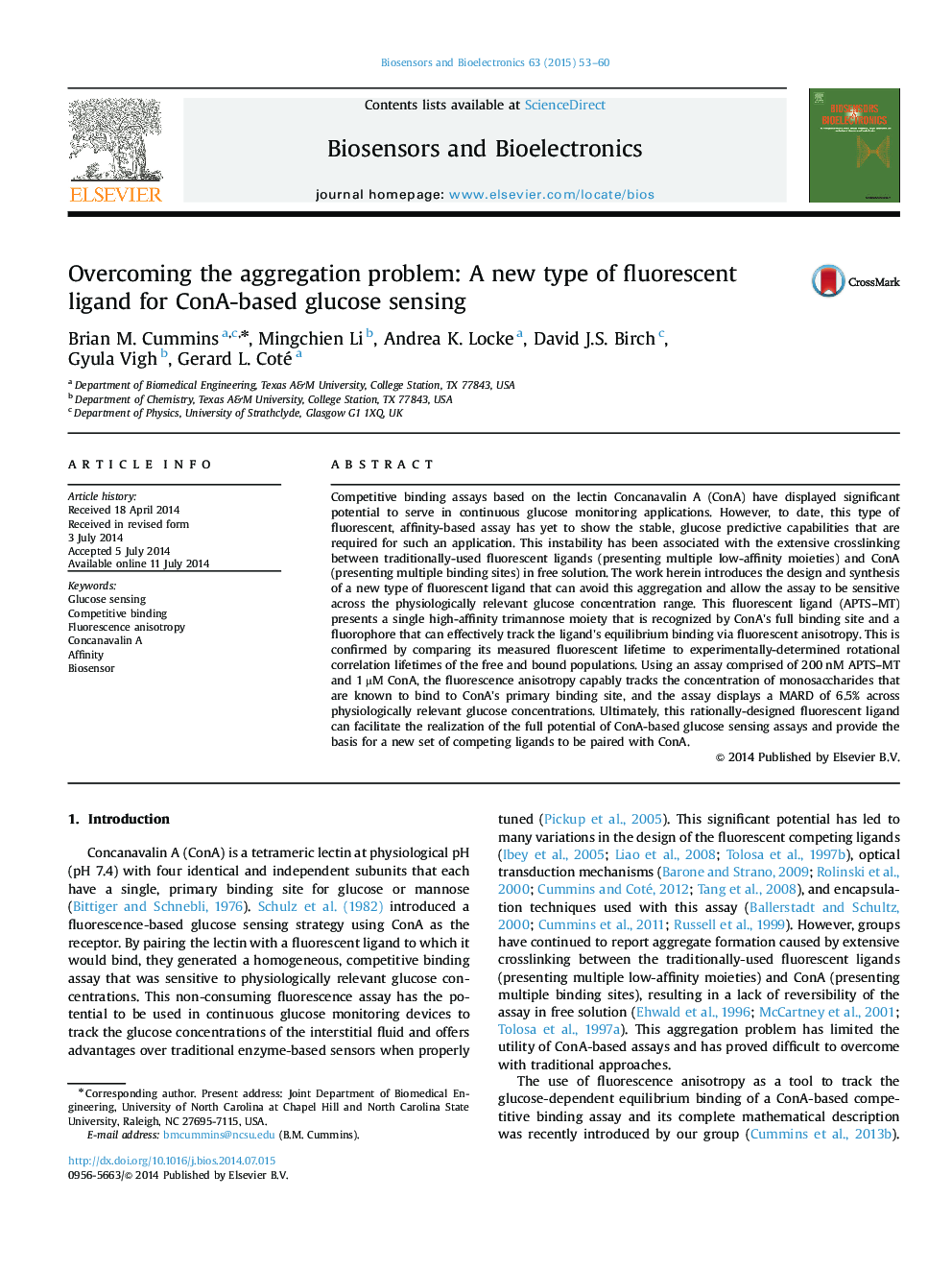| Article ID | Journal | Published Year | Pages | File Type |
|---|---|---|---|---|
| 7232932 | Biosensors and Bioelectronics | 2015 | 8 Pages |
Abstract
Competitive binding assays based on the lectin Concanavalin A (ConA) have displayed significant potential to serve in continuous glucose monitoring applications. However, to date, this type of fluorescent, affinity-based assay has yet to show the stable, glucose predictive capabilities that are required for such an application. This instability has been associated with the extensive crosslinking between traditionally-used fluorescent ligands (presenting multiple low-affinity moieties) and ConA (presenting multiple binding sites) in free solution. The work herein introduces the design and synthesis of a new type of fluorescent ligand that can avoid this aggregation and allow the assay to be sensitive across the physiologically relevant glucose concentration range. This fluorescent ligand (APTS-MT) presents a single high-affinity trimannose moiety that is recognized by ConA's full binding site and a fluorophore that can effectively track the ligand's equilibrium binding via fluorescent anisotropy. This is confirmed by comparing its measured fluorescent lifetime to experimentally-determined rotational correlation lifetimes of the free and bound populations. Using an assay comprised of 200 nM APTS-MT and 1 µM ConA, the fluorescence anisotropy capably tracks the concentration of monosaccharides that are known to bind to ConA's primary binding site, and the assay displays a MARD of 6.5% across physiologically relevant glucose concentrations. Ultimately, this rationally-designed fluorescent ligand can facilitate the realization of the full potential of ConA-based glucose sensing assays and provide the basis for a new set of competing ligands to be paired with ConA.
Related Topics
Physical Sciences and Engineering
Chemistry
Analytical Chemistry
Authors
Brian M. Cummins, Mingchien Li, Andrea K. Locke, David J.S. Birch, Gyula Vigh, Gerard L. Coté,
